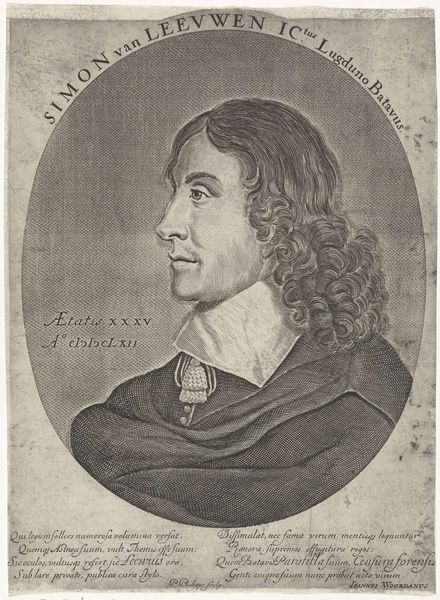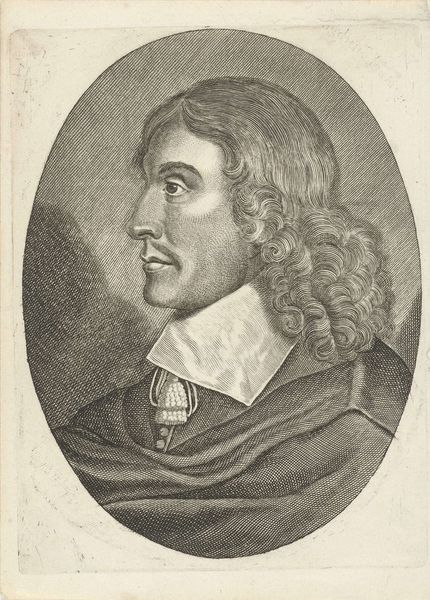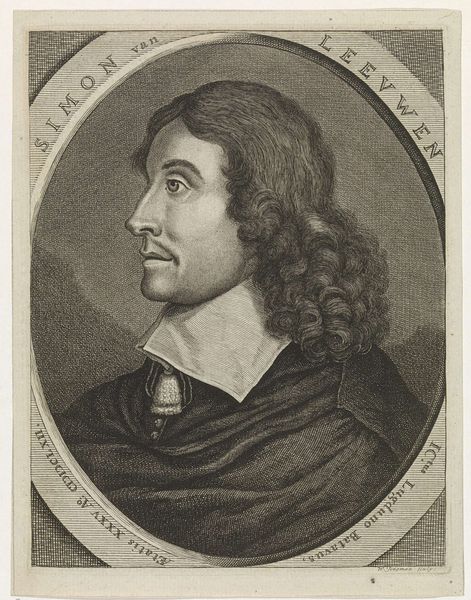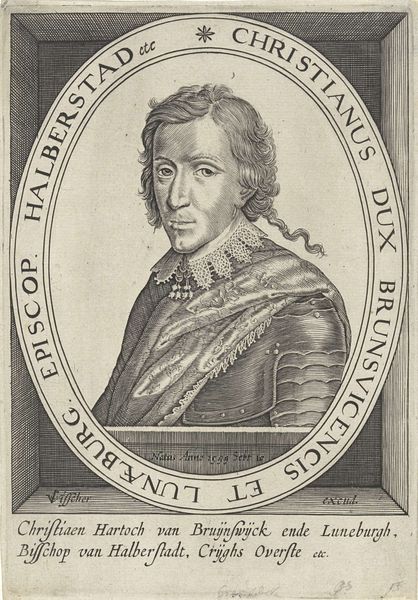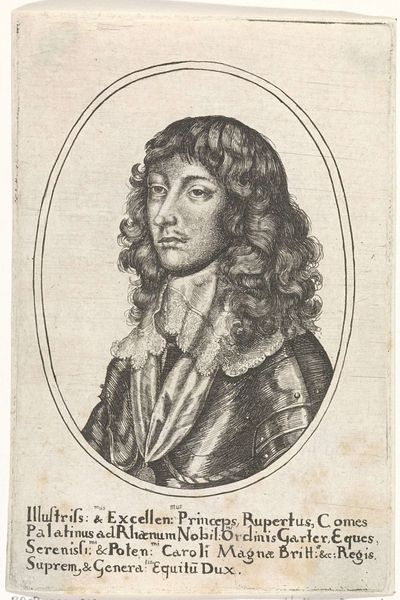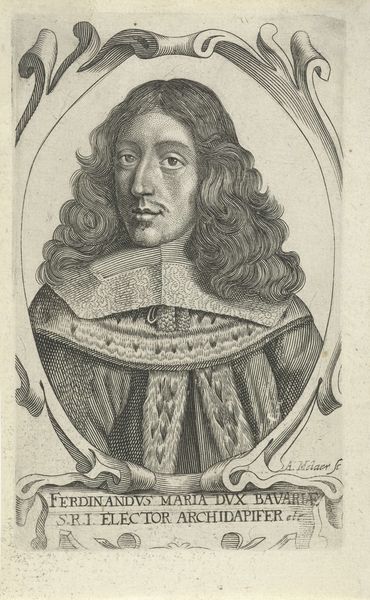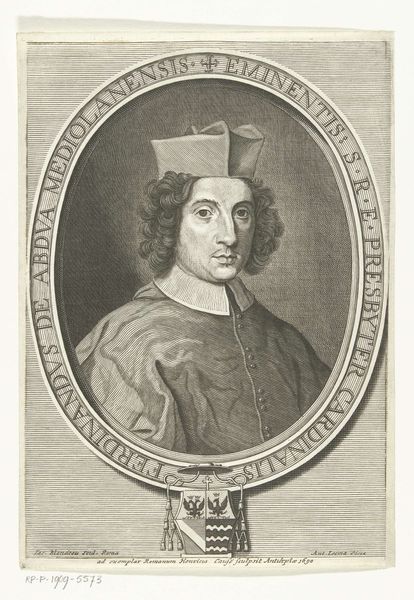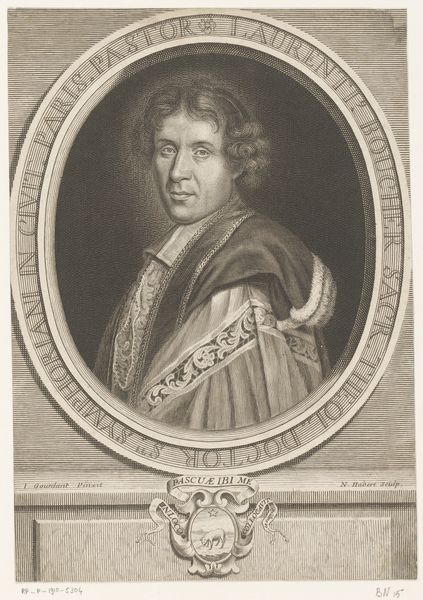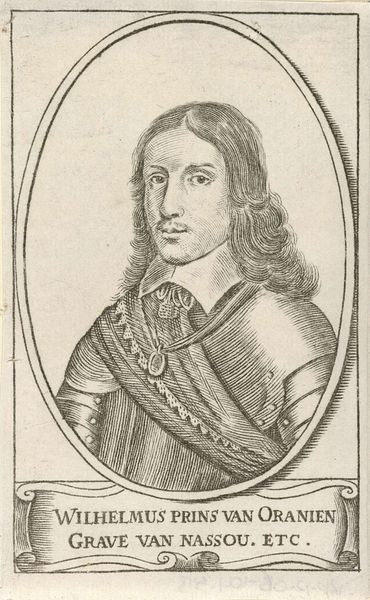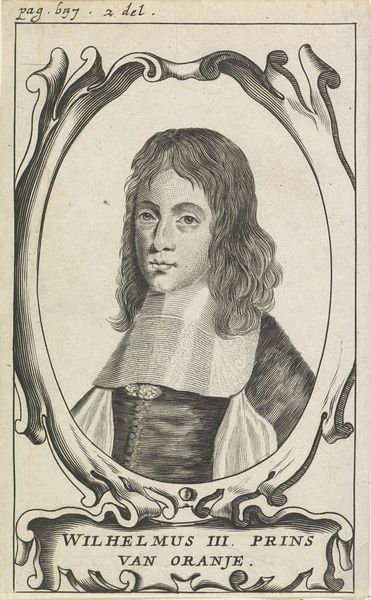
engraving
#
portrait
#
baroque
#
portrait image
#
portrait drawing
#
history-painting
#
engraving
Dimensions: height 226 mm, width 176 mm
Copyright: Rijks Museum: Open Domain
Curator: Pieter Philippe produced this engraving, "Portret van Simon van Leeuwen," in 1662. It's currently held at the Rijksmuseum. Editor: Immediately, I’m struck by its precision. The lines are incredibly fine, creating a delicate, almost ethereal feel despite being a portrait of what seems to be an important person. Curator: Absolutely. Philippe’s skill in capturing detail is evident, especially in the rendering of van Leeuwen’s hair. Notice how each strand seems meticulously placed. From an art historical point of view, portraits like these functioned as powerful status symbols within 17th century Dutch society. Van Leeuwen, whose name is etched above his head, was obviously someone of prominence. Editor: Yes, there's a formality in his profile and the weight implied by his clothes and title. This elevation creates a barrier between us and the sitter; a deliberate effect? Are we meant to be impressed, and how are those classical flourishes underneath relevant? Curator: Those classical references printed at the bottom provide vital clues. By presenting Van Leeuwen in this timeless idiom, Philippe suggests qualities such as erudition and enduring significance. And it all adheres very strictly to conventions of Baroque portraiture. We see the restrained, idealised, authoritative sitter made very permanent. Editor: I see what you mean about this formality lending him a historical dimension. Does this portrait reveal something specific about its sitter’s personality, or does it project period values onto his form? This makes me question how engravings can genuinely capture the spirit of an individual beyond established codes and iconography. Curator: A crucial point. One could certainly argue the extent of genuine representation in such formal portraits. But through analyzing its technical mastery and how it fits within societal and artistic conventions of its time, we find avenues to decode the subject and age's values. Editor: The work then reminds me that the subject and its maker live through time, though both inevitably fade. How interpretations transform history: not as fact, but through images and artistic representations, to reveal even more about both of their eras than at first seen.
Comments
No comments
Be the first to comment and join the conversation on the ultimate creative platform.
